What's New
Displaying results 2791 - 2800 of 4052
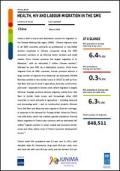
Resource | Publications,
China is both a source and destination country for migration in the Greater Mekong Sub-region (GMS). Chinese migrants work in all GMS countries, primarily as professional or low-skilled workers employed in Chinese companies along the GMS economic corridors or as informal sector workers and small traders. From Yunnan province the largest migration is to Myanmar, with an estimated 2 million Chinese workers, followed by Laos PDR. As a destination country, China hosts migrants from all GMS countries. Yunnan province attracts a large number of migrants from Myanmar (an estimated 100,000 Burmese worked in two border towns in 2012) as well as from Viet Nam and Laos to work in agriculture, factories, construction, and trade – especially in border zones where migration is largely informal. Guangxi province attracts migrants mainly from Viet Nam in border trade zones, and increasingly other GMS countries, to work primarily in agriculture – including seasonal and processing work – and on construction projects.
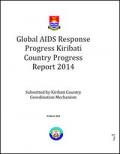
Resource | Publications,
Kiribati is experiencing a low level general HIV epidemic. To date Kiribati has an estimated 55 cumulative cases of HIV dating from 1991 to the end of December 20131. The majority are males but there is increasing gender balance over the last decade. There are 23 confirmed AIDS related deaths four of which are children. Of the current estimated HIV positive cases (n=28), 6 are on antiretroviral treatment (ART).
This report was prepared through a consultative process involving key stakeholders from both Government and civil society. The Kiribati Country Coordinating Mechanism (CCM), as a GF‐governing body at country level was involved every step of the way through consultative meetings and interviews.
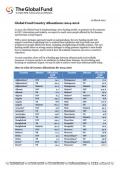
Resource | Data Sheets,
With a more strategic approach based on national plans, the new funding model will support countries in planning how to control these epidemics and to provide care and treatment to people affected by them, including strengthening of health systems. The new funding model relies on strong country dialogue to bring partners together to best decide how to maximize impact, and to look at how all available resources can serve a country’s objectives.
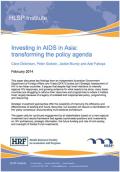
Resource | Publications,
This paper discusses key findings from an independent Australian Government Department of Foreign Affairs and Trade (DFAT)-funded joint Strategic Assessment of HIV in ten Asian countries. It argues that despite high level intentions to intensify regional HIV responses, and growing evidence for what needs to be done, many Asian countries are struggling to refocus their resources and programmes to where it matters most, largely because of a legacy of outdated and inappropriate policy, programming and resourcing.
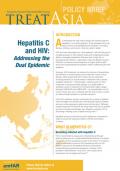
Resource | Publications,
HCV has been described as a “dual epidemic” with HIV because it is highly prevalent in HIV-endemic areas and it disproportionately affects vulnerable populations that also have a high risk of developing HIV infection—especially in Asia and Eastern Europe. HIV/HCV co-infection has emerged as an urgent public health issue that is jeopardizing the progress made in addressing the HIV epidemic.

Resource | Presentations,
Presentation presented at WPATH International global perspectives meeting
Dates : 14 Feb 2014 - 18 Feb 2014
Place : Anantara Riverside, Bangkok, Thailand

Resource | Presentations,
Presentation presented at WPATH International global perspectives meeting
Dates : 14 Feb 2014 - 18 Feb 2014
Place : Anantara Riverside, Bangkok, Thailand

Resource | Reviews and Snapshots,
Typical of the pattern seen elsewhere in Asia, the epidemic in Philippines began with explosive growth of HIV among people who inject drugs (PWID); in Cebu, HIV prevalence in male PWID increased from 0.8% in 2005 to 52.4% in 2013. Recent surveillance indicates that HIV is spreading from Cebu to the neighbouring city of Mandaue, where prevalence has increased from 0% in 2009 to 42.3% in 2013 (IHBSS 2005 to 2013).
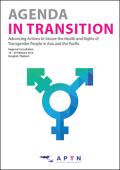
Resource | Publications,
Transgender people in Asia and the Pacific face many challenges in claiming their rights in general, and specifically their right to health care. Through capacity building the transgender community can be empowered to promote transgender-positive attitudes and advocate for competent, comprehensive and accessible health services.
In order to identify priority actions for the health and rights of transgender people in Asia and the Pacific, the Agenda in Transition regional community consultation was held in Bangkok, Thailand, on 19-20 February 2014. This event brought together diverse members of the transgender community; UN agencies, civil society organizations, donors and other partners to review the current situation for the region’s transgender people and determine those needs, which require accelerated action.
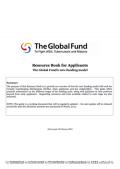
Resource | Guidelines,
The purpose of this resource book is to provide an overview of how the new funding model will work for Country Coordinating Mechanisms (CCMs), other applicants and key stakeholders. This guide offers practical information on the different stages of the funding cycle, along with guidance on best practices learned from early applicants. Supporting resources and tools available related to each stage are also indicated.





